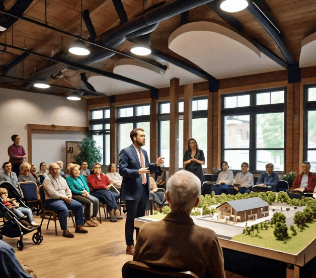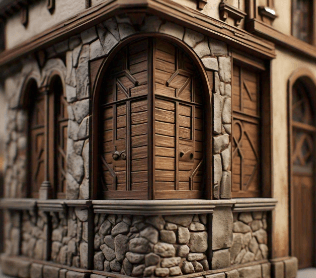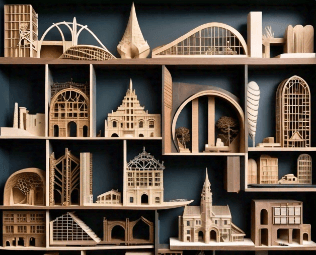Introduction
Scale models have long been a staple in architecture, serving as a tool for exploring design concepts and facilitating communication between architects and their clients. While advancements in technology have shifted many architects toward digital modeling, the relevance of physical scale models remains significant. This article delves into the importance of scale models in architecture, highlighting their roles in communication, creativity, and the design process.
1. Communication with Clients
One of the foremost reasons for creating scale models is to enhance communication with clients. Architectural drawings and 3D plans can be complex and difficult for laypeople to comprehend.
- Visualizing Concepts: A physical model provides a tangible representation of the architect’s vision, allowing clients to visualize the final project in three dimensions. This can clarify design intentions that might be lost in technical drawings.
- Facilitating Feedback: Having a model in hand enables clients to engage more actively with the design process, offering feedback and insights based on their understanding of the physical representation. This is especially useful during discussions about aesthetics, spatial relationships, and functionality.

2. A Tool for Project Development
Creating a scale model can also act as a developmental tool during the design process.
- Design Refinement: While architects increasingly rely on digital tools for design iteration, building a physical model can reveal insights that may not be obvious in digital formats. The tactile experience of handling a model often highlights spatial relationships, proportions, and material interactions.
- Demonstrating Projects to Investors: Once a design is finalized, architects can present scale models to potential investors or stakeholders. A well-crafted model can effectively communicate the value and vision of the project, making it easier to secure funding or support.

3. Public Engagement and Awareness
Scale models play a crucial role in engaging the public, particularly in large-scale development projects.
- Informing Communities: When significant improvements or renovations are proposed, a detailed scale model can help the public visualize the project. This is beneficial for garnering public support and facilitating discussions during planning meetings or community forums.
- Showcasing Intended Impact: By revealing how a new development will fit into its context, a model can illustrate the potential benefits of a project, addressing fears or concerns from community members.

4. Stimulating Creativity and Imagination
Working with scale models requires architects to engage their imagination in unique ways.
- Abstract Representation: Scale models, while representing an idea, are ultimately abstractions. They don’t possess the full physical presence or colors of a real building, compelling architects to envision textures, finishes, and even user experiences in their minds.
- Inspiring Innovative Solutions: The three-dimensional nature of a physical model can inspire creative problem-solving. Architects manipulate materials and shapes, prompting fresh ideas that may not emerge in a purely digital environment.

5. The Difference Between Physical and Digital Models
There’s a fundamental difference between physical scale models and digital representations.
- Tactile Experience: A three-dimensional scale model provides a sensory experience that a computer-generated model cannot match. Touching and interacting with a physical object offers insights into mass and scale that 2D screens cannot convey.
- Mental Visualization: Creating a model encourages architects to think in three dimensions. As they manipulate and view the model from different angles, they are motivated to think creatively about how the final structure will be experienced in reality.

Conclusion
While technology continues to transform architectural design methods, the importance of scale models persists. They serve as vital tools for communication, development, and creativity, enabling architects to articulate their visions more effectively. By engaging both the mind and senses, scale models foster an environment of innovation, helping architects refine their ideas and enhance their designs. Ultimately, the craft of model-making remains an invaluable skill in the discipline of architecture.

